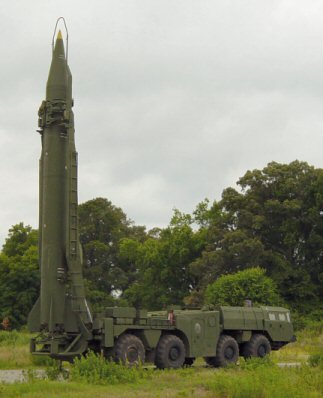After nearly two months of Saudi attacks against Yemeni cities, the Shi’ite Houthis fired a pair of R-17 Elbrus missiles, commonly known as Scud-B. The Saudi military knocked both missiles down with a Patriot Missile battery, and no casualties were reported.
 The firing was noteworthy as the first use of Yemen’s Scud arsenal in the current war. Yet analysts note that the aging arsenal is unlikely to do much, if any damage to Saudi Arabia, and certainly poses no threat to its ongoing war against its southern neighbor.
The firing was noteworthy as the first use of Yemen’s Scud arsenal in the current war. Yet analysts note that the aging arsenal is unlikely to do much, if any damage to Saudi Arabia, and certainly poses no threat to its ongoing war against its southern neighbor.
Most of Yemen’s missiles are believed to be R-17’s acquired in the late 1970s. The nation is also believed to have acquired an unknown number of North Korean Hwasong missiles, a copy created in the early 1990s. Overall their pre-war arsenal was believed to be around 300 missiles total.
Yet months of Saudi airstrikes have centered on Yemeni missile depots, causing massive damage to several sites and setting off explosions that killed hundreds of civilians. It’s unclear, then, how many of the missiles have even survived to this point.
Even then, the Scuds represent an outdated form of missile, and historically an extremely inaccurate one. While downing them with Patriot missiles is a costly solution for the Saudis, the ability for them to do so underscores how unlikely it is for any of these weapons to get through and hit anything meaningful to the war effort.


